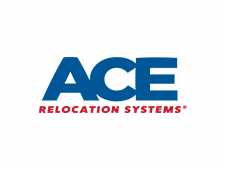
With the economy in flux and the long-term effects of remote work still unknown, it’s fair to ask how the Bay Area – as the world’s leading hub for technology, entrepreneurship and innovation – is faring. In this commentary in the Times of India, Bay Area Council Economic Institute Senior Director Sean Randolph examines the hints provided from the current snapshot.
First, a number of major companies – HP Enterprise, Oracle, Palantir and Tesla – have moved their headquarters elsewhere. There are any number of issues – taxation, social problems, and cost (primarily). For the most part, however, while their executives have scattered their R&D and most of their workforce are still here. Silicon Valley has always been about churn and creative destruction, and we’re seeing both. To the point, there’s an army of younger, venture-funded companies waiting in the wings to expand in the region. Still, no place likes to see companies leave, so let’s call this a negative.
But wait, overseas-headquartered companies and governments with research and innovation offices have sustained and even expanded their presence. Hundreds operate in the region. They’re drawn by its status as the epicenter of the global digital revolution. Put that in the plus column.
What about venture capital? Last year was incredible with nearly $300 billion in venture funding nationally, of which a third ($105 billion) was invested in Bay Area companies. With venture investment falling and startups tightening their belts this year will be different. Investment will also be spread more widely across the U.S. as opportunities outside the region grow. On the other hand, we’re coming off a record high so some cooling’s not a bad thing. Cycles are cycles after all. And even with a sharp drop in funding in the first half, 2022 is on pace to be the region’s fifth best funding year ever for late-stage companies and the best of any year except 2021 for early stage.
Looking ahead, VCs are raising new funds at a record pace – perhaps even surpassing last year – so the money’s there. And if venture funding helps more entrepreneurs across the country to succeed that’s a good thing. It spreads the wealth. The capital and decisions on how to spend it, though, will still be in Silicon Valley. On balance, let’s call this a wash.
The full impact of remote work is still to be seen but we know it’s large. The ability to work from anywhere (at least part of the time) enabled tech workers to move from expensive places like the Bay Area to cities of their choice where costs are cheaper such as Austin, Boise or Miami. That leaves many offices in San Francisco nearly empty (in July occupancy was 38%) and the region’s downtowns quiet. This mutes the intense networking the Bay Area is known for and is part of its magic. That’s a negative.
Looked at more closely, though, most workers who left San Francisco or Silicon Valley stayed in California, typically in places with more space and cheaper housing but only a car drive away. Some who went farther – and a fair number did – have started to return. While many companies have downsized their offices space big tech companies like Google, Meta and Apple are building new campuses and taking new leases (Google’s new Diridon Center in San Jose will include 4000 residences, 7.3 million square feet of office space, and 15 acres of parks.)
Networking is also coming back, with startup cohorts returning and meetups and conferences resuming (Plug and Play’s annual summit last month, its first in person event in two years, was attended by 2300 including 1000 from overseas). There’s a palpable
desire to reconnect. So for now this one’s neutral.
Finally, what about technology itself – which is where Silicon Valley has been rooted since the early days when the semiconductor industry got its start? Real estate leasing offers one clue. While the market for Silicon Valley offices cooled in the first half of this year demand for R&D space is up, with rents hitting a record and vacancy back to (low) pre–pandemic levels. Advanced manufacturing is the driver. And by the way, biotech is booming with biotech R&D space at a premium.
Universities like Stanford, Berkeley, UCSF (one of the nation’s top biomedical campuses) and UC Davis (the nation’s top campus for agtech) are continuing to churn out technology and founders without missing a beat. The Bay Area is the top center in the United States for AI research, which over time will impact nearly everything. That’s different from a social media app that can be produced anywhere.
Reflecting this and the massive R&D budgets of the region’s large technology companies, per capita patent generation is multiples higher than in other metropolitan areas in the United States. And Nature Index Science Cities ranks the San Francisco Bay Area as the number four region in the world for science based on its share of scientific articles. Numbers one and two are Beijing and New York (which are vastly larger) and number three is Boston; popular cities for tech nomads show up far down the list if at all. Miami might be a nice place to live (half the year) but it has no research university, and other places that have attracted tech workers would do well to have one. So this goes solidly in the plus column.
We don’t know what the tech world and the Bay Area’s place in it will look like several years from now, but reading the tea leaves today and the region’s inherent strengths, for now it’s primacy looks assured.
Sean Randolph is senior director at the Bay Area Council Economic Institute and a frequent writer on global business and economic issues (www.bayareaeconomy.org)












































